– So good evening and welcome to UW Space Place. Tonight we have a guest speaker. I’m very pleased to introduce John Rummel who is a very accomplished amateur astronomer and photographer here in the Madison area. And his photographs have appeared in some prominent places that we could tell you about. And part of his work has been to seek out dark skies in Wisconsin. I meant to mention that he was also a former president of the Madison Astronomical Society. So some of you knows what he’s talking about when it comes to seeking out dark skies for astronomy and photography. So John is going to talk tonight about dark skies in Wisconsin. So join me in welcoming John up here.
(audience applauding)
– Thanks Jim. Microphone working? So, I am going to spend about the next 45 minutes or so telling you a little bit about some of my travels and my attempts to locate some of the darkest skies in the continental United States. I haven’t yet extended that search beyond the continental US. That might be coming soon. So that’s me in the picture. This is a picture that I took in a location that I’m going to talk about in a little while in California a couple of years ago.
So it’s one example of the attempts that a lot of astronomers are doing these days and not only taking pictures of the sky, but attempting to marry landscape photography with celestial photography. So there is the milky way spread above a very dark location in the mountains in California. But I want to start this talk where, some of these talks are really about light pollution.
I’m not going to talk specifically about the problem of light pollution tonight but I wanted to at least address it to make sure that you’re all aware of why the search for dark skies is as important as it is. This little illustration illustrates something called light trespass. I trust that there aren’t many examples like this where somebody’s spotlight is shinning directly in the window of the adjacent house. But there are certainly examples of light trespass.
More commonly when we talk about light pollution, we’re talking about the fact that our cities and our populated places have a remarkable degree of nighttime glow, because of all the artificial lights that we use. As population centers grow, light pollution grows along with it. It doesn’t have to be as bad of a problem as it actually is.
It’s mainly because a lot of the lights that we’ve chosen down through the years are very poorly-designed, unshielded lights, that really don’t do what they’re intended to do. A lot of these examples don’t illuminate the ground very well. They spill as much light upward as they do downward. These examples of unshielded lighting are what causes those prominent glows in our city spaces these days.
So when we talk about light pollution, that’s primarily what we’re talking about, light that inadvertently spills upward or sometimes purposefully spills upward. In this just egregious example of artistic lighting of a downtown city scape. So I’m not going to spend a great deal of time talking about properly shielding lights. I’m going to talk about the other end of this problem and that is the trek to travel outside of cities and find the truly dark places.
And this conversation for me kind of started with two articles that I found online over the past couple of years. This is the first one. This article appeared on a travel website called the Lonely Planet website. And it caught my attention because it talks about a destination that I’m not unfamiliar with. So let me just read a bit of it to you. “There’s not much in the Hocking Hills, an undulating, “bucolic realm in the far southeast corner of Ohio.
“Not much, that is, but some of the nation’s darkest skies.” And I like that sentence because Ohio is frequently not a location that you hear mentioned when the conversation is about some of the nation’s darkest skies. Ohio, really? So you might be familiar with this map. This is one of the first dark sky composites that was put together in the age of satellite photography.
So a composite nighttime image of the US obviously assembled from hundreds of individual images carefully selected for minimal cloud cover and that kind of thing. And we first got to look at these images back in the late ’80s and early ’90s that kind of outlined the problem for us. Well, light pollution really is an issue.
There are other clues that you can use. This is a zoom in of the area of kind of central Ohio, Columbus there on the upper right and Cincinnati and Dayton on the lower left. And I put a dot where Hocking Hills State Park is. That’s Hocking Hills. Even before the tools that I’m going to show you for finding and identifying some of these dark sky locations just looking at any map, you can get a clue.
If you look at the green areas down on the lower right-hand portion of that map, green is usually a cue for public lands, state parks, national parks, state forests, national forests, wildlife refuges, recreational areas. Any kind of land that’s set aside for public use is often identified as green on maps. Some old maps use brown by mostly these days it’s green. And you can see that Hocking Hills is in a vicinity of a lot of green.
So that’s a clue that that might be a darker location within the state of Ohio. Going back to our vintage 1980s, 1990s map, you can kind of identify where Ohio is there below
to the right of Michigan below Lake Huron.
And again the whole right half of the United States, the whole eastern half of the US is just kind of a conglomerate of light pollution. That’s where most of the population is. There are some newer tools that are available. This map for instance was also put together from satellite data, but this isn’t a photographic map. This is a map of a different kind, scientists using different types of data to assemble.
One of the byproducts is it’s good for mapping light pollution. And I’m going to get into some maps that use this particular brand of color coding to help identify light pollution. The color coding that we’re going to talk about comes from the left-hand side of this diagram.
This diagram, I stole if from a location on the Internet, goes back to that center column there, the Bortle Class. John Bortle was an amateur astronomer who back in about 2001 wrote an article for Sky & Telescope magazine around the issue of kind of classifying or quantifying the darkness of skies. And so Bortle’s Classes 1 through 9, have entered the nomenclature of amateur astronomy.
So you might hear an amateur astronomy talk about the really awesome Class 2 skies that they had when they were at the Grand Canyon or something like that.
I’m not going to get into what the right-hand side of this
graph talks about with sky brightness and those kinds of things. Instead, I’m going to replace those with my own descriptors. So these are my descriptors of what I think Bortle was trying to get at. From Class 8 or Class 9 skies on the bottom are the worst skies that you can get. Think downtown Chicago or Manhattan, opaque urban skies. You can see the brightest stars which are usually planets and you can see the moon. And that’s about all you can see.
The fainter stars and certainly the milky way are completely obscured and then that scale runs all the way down to Bortle Class 1, which are totally remote, radically dark skies. The color coding you see on the left-hand side of this graph corresponds to the color coding that I showed you on that map a minute ago. And we’re going to talk about those colors quite a bit tonight. There’s a tool that I like a lot called the Dark Sky Finder. This website is amazing in what it can do.
It’s a Google mashup. It’s a Google-assisted map that I’m going to show to you. That’s the actual URL, but if you just Google dark site finder or dark sky finder, this is the first site that will come up. Unfortunately, as happens sometimes, Google is constantly updating their service. Google is a complicated set of Internet webpage tools designed to make maps available to developers who do things like this and do lots of other things too.
Occasionally Google updates its web tools and as a consequence some creations like this break. Just after I put this talk together last year, Google updated its program or interface or something and my dark site finder broke. And it stopped working for a period of about two months. I was frantically emailing the author.
He eventually got it back up and running, but the Dark Site Finder that is back up and running today is slightly changed and some of the functionality, unfortunately, has been lost. What I’m going to show you here is the Dark Site Finder as it existed when I put this presentation together late last year. It is just a Google map. Here’s a close-up view of the United States, and overlaying that map you can put in this layer of what essentially is the light pollution gradient.
And you can see how that color-coding works, the densest population areas are white, which is Bortle Class 9, those are the worst skies. And as you move away from something like Chicago or New York City or Denver, you can see how you go through the reds, the oranges, the greens and so forth. And we’re going to talk about that. Like any Google Map, you can zoom in almost infinitely and get down to street level detail in some instances with this map.
Like many things today, there’s also a phone app for this. I have never purchased it. When I put this presentation together, it cost $3. I am very selective with apps I purchase. I never bought it, so I never had a chance to try it. I don’t know how well it works. I use the web app exclusively. So coming back to the Hocking Hills.
There it is. This is the Ohio map again. Now, we’re looking at the Dark Site Finder and I’m going to put the overlay in there so you can see the light pollution levels. Columbus and Cincinnati are hopelessly lost in Class 9 skies. Dayton is almost as bad, but now you can see that drop off as you travel outward from major population centers. From the red to the yellow, eventually to the green. And Hocking Hills is located deep in that green area.
Putting Bortle’s Classes back up there, that’s what Bortle would probably call Class 4 skies or the rural/suburban transition. Those are pretty good skies. Class green skies are pretty good. Is it okay if we hold questions till the end? Okay. So, that’s how Hocking Hills stacks up. I’ve never been there, but I do make this drive. I drive back to the East Coast fairly frequently.
So I drive Interstate 70 right through Columbus, and right after you pass Columbus going east, there’s an exit that says “The Wilds.” You know, go this way and their pointing right down to that area of southeastern Ohio. The West Virginia border is not too far away from there and then as you get further into that, you’re into the foothills of the Rockies in that West Virginia transition into the Appalachian Mountains. Did I say Rockies? Sorry about that, the Appalachians.
And that’s some pretty remote area. For the Eastern US, that’s pretty good. So I’m not surprised that Southeastern Ohio has a place like Hocking Hills. Going back to John Bortle, this is a quote from his Sky & Telescope article in 2001. “Unfortunately, most of today’s stargazers “have never observed under a truly dark sky, “so they lack a frame of reference “for gauging local conditions.
And putting his graph back in there, keeping in mind that the Hocking Hills was there around Borlte Class 4 in the green.
A word about Bortle’s classifications. Most of what’s on this slide, Bortle didn’t do. He didn’t have anything to do with the color coding, he didn’t have anything to do with my descriptions over there and so I feel guilty calling Bortle Class skies, when I’m really talking more about Rummel Class skies. So I changed that for my presentation. I’m going to stick with that. The dark sky concept is an exercise in relativity. It depends on where you live.
If you spend your life living in downtown Chicago
and that’s the sky that you become used to looking at, on those rare locations when you find yourself in Gary, Indiana, you’re probably going to look up at the sky and say, “Wow, that’s a pretty good sky.” Whereas somebody who lives in Southeast Ohio, if they find themselves in Gary, they’ll be like the worst sky possible. So it’s an exercise in relativity.
Those bottom three subdivisions that I have, Bortle Class 5 and worse, approximately 75% of the population lives in those places, meaning about 3/4 of the population never really sees a dark sky unless they go to some effort to go out and see it. So for those of us who live in Bortle Classes 5, 6, 7, 8 and 9, when we want to go to some place that’s dark, we usually get in the car and we drive a half an hour, maybe 45 minutes, and we drive out to those Class 4, 5, 4 and 4.
skies as on my– So when we travel to those places that’s what we call dark skies. For most of us who live in cities, the size of Madison or above, those skies which includes the Hocking Hills, that suffices for our purposes of what dark skies are. Maybe occasionally, especially amateur astronomer types like me, maybe we go a little bit further and we really go out into the sticks: Northern Wisconsin or traveling somewhere west in the US, then we go to those skies.
And that’s what we call really really dark skies. But what Bortle seems to be saying is that most people have never seen truly truly premier dark skies or radically dark skies. And that’s what I’m going to talk about tonight, because I’ve spent a lot of time looking for those radically dark skies. So going back to Bortle’s quote, he ends his quote saying that we have a tough time gauging local conditions because we’ve never really seen dark skies.
So let’s start our conversation with some discussion of local conditions. This is Southeast Wisconsin. So now I’ve got Milwaukee on the extreme right and Madison on the left. And I’m going to put a frame of reference up there that’s meaningful to me as an MAS member. If you go about 20 miles due south of Madison, right where that dot is, right there,
the Madison Astronomical Society owns a dark sky site. It’s about 20 miles as the crow flies due south of Madison. It’s a little bit southwest of Brooklyn down there in Green County. That is our dark sky site. For our Wisconsin location, for those of us who live in Madison, the relativity of dark skies indicates that once we get 20 miles south of Madison, we’re in some pretty good skies. I took this picture many years ago.
One of our domed observatories which is no longer there, we’ve removed that, but looking south, you’ve got a good view of the Milky Way, you’ve also got a lot of surface horizon light pollution because Monroe, Jamesville, other cities down there to the south. So our location in Green County is a good location.
But before I throw the overlay up there and actually show you with the dark site finder what those skies stack up to quality wise, do you have any guesses? What Bortle Class are we going to end up with when we go 20 miles south of Madison? Any guesses?
[Audience opines]
Here is the overlay.
Well, we head into the yellow. And for those of you who said 4 1/2, you nailed it. It’s not as good as Hocking Hills, which is about 45 miles south southwest of Columbus. But for purposes of those of us who live in Madison and want some place to observe, those 4.5 skies are pretty good skies.
This is a wider view now of the State of Wisconsin including some of Illinois, some of Iowa, some of Minnesota. Here is the full dark sky projection on to that wider view. You can see down there where Madison
and Milwaukee are, the map that I showed you before, I was cheating a little bit. There is no green at all in that map but if you look just to the west, there’s a lot of green and there’s even a little bit of purple out there in Western Wisconsin, not too far away. We have some very good dark skies in the state of Wisconsin.
Look at Northern Wisconsin. Let’s look a little bit closer at the northern tier of the state. Keeping in mind our cue for public lands, there’s a lot of public land, national forest up there. And as you would expect, that means there’s a lot of dark skies up there. Northern Wisconsin is saturated with greens and purples and some of those Class 2, the gray and the black that suggest really dark skies.
By the way, the map projection that we’re using enhances the use of that color coding a little bit. So you’ve got two shades of orange, two shades of yellow, two shades of green, two shades of purple and so forth.
This is a location in the Nicolet-Chequamegon forest about 10 to 15 miles west of Mellen,
30 or so miles south of Ashland, Wisconsin.
Until I started doing some extensive traveling in Western US, this was the darkest place that I had ever seen. These skies are phenomenal.
This is Raspberry Island Lighthouse in the Apostle Islands. Again, beautifully beautifully dark skies, as good as Class 2 or 3 skies.
Returning to the southern part of the state. Now I’ve put Madison all the way down on the lower right and Rochester up there on the upper left, with La Crosse kind of in the middle. So this is going to catch a lot of that green and purple zone area to the west of Madison.
I’ve been obsessed with those three, what I call the purple blobs in Western Wisconsin, that ones in Iowa, for years. And I’ve done some scouting out there. These are not that far away from Madison. And when you get into the green and the purple, you’re getting into some pretty good dark skies. This is a location near Gays Mills, trespassing on a farmer’s field after the harvest a couple of falls ago. These are some really good skies. And there are some places out there,
some little county parks, some little roadside, waysides with like a little picnic table and gazebo and things like that. Some pretty good places where you can observe out there.
So I’ve done some significant investigating of some of those Wisconsin locations. And in fact– I’m going to go back a couple of slides. See that big purple blob?
That’s Black River Falls, right there. Just to the east of Black River Falls, there’s a big blob. That’s Cranberry Country. A lot of marshy areas, a lot of cranberry farming that happens up there. I’ve got a camping trip planned up there at the end of April and if that’s cloudy, at the end of May targeting the new moon windows to do some scouting for those dark skies up there. Wisconsin has some great dark skies, if you’re willing to drive just a few hours.
By the way, going back to Hocking Hills, this was in the news not too long ago. Hocking Hills Astronomy Park, Yeh! State of Ohio. The Department of Natural Resources in Ohio teamed up with the friends of Hocking Hills State Park and they named it the John Glenn Astronomy Park ’cause John Glenn, the astronaut, is an Ohio native. This is a pretty impressive facility. I’m going to visit this on one of my next trips east and hopefully spend a night there.
A couple of outbuildings, a couple of restroom facilities and lots of observing opportunities with telescopes, local astronomy clubs and things like that. So good for the Hocking Hills State Park and good for the State of Ohio. So I mentioned two articles. This was the second article that I came across. This is a website that I read almost every day, FiveThirtyEight. It’s kind of a politics website.
The developer of the website, Nate Silver, is actually a statistician, mathematician, who got into political forecasting more or less successfully, depending upon which election you look at.
But, this article popped up on FiveThirtyEight back in February of 2017, so almost two years or a little over two years ago now. “The Darkest Town in America.” Naturally, it caught my attention.
So that’s the actual URL, but if you just googled darkest town in America, FiveThirtyEight, the article is still there, it still comes up. Oliver Roeder, the author of this article, is an economist, but he writes quirky articles for FiveThirtyEight and so he wrote this one. So the town that he’s talking about is in Nevada, right there. It’s called Gerlach, Gerlach, Nevada.
I had never heard of it, but as soon as I did I went to the dark sky map and sure enough Gerlach is up there in Bortle Class 2, gray skies, not far from the boundary with the darkest of the dark in that black hole of Nevada. For reference, Reno is right there. I’ve been to Reno a couple of times. So I know Reno. Sacramento down here. This is about 80 miles up to Gerlach. So it’s a good, as the crow flies, 80 miles.
The way the roads run out there, it’s probably a two to three-hour drive to get up to Gerlach. I’ve never been to Gerlach. I was in this area a couple of years ago in August. Unfortunately, up here in the Black Rock Desert, a little event takes place at the end of every August called Burning Man. And if you’ve never heard of Burning Man, there’s no way to describe what Burning Man is. You just have to look it up.
So this whole area is locked down for about a month before Burning Man because of all the stuff they have to bring in. And then probably for nearly a month after Burning Man, where they clean it up and restore the desert to its proper place. I was there, too close to Burning Man, I didn’t even attempt to go to Gerlach. I want to go there someday just to visit. But this whole concept of the darkest town fascinates me. I question whether that’s true.
And I’ve done some research and probably added some legs to some future road trips, but it’s all subjective because it depends on how you define a town when you get right down to it. There are probably darker towns, but how far do you have to go from a crossroads and a gas station before you actually become a town. We could discuss that, maybe I’ll be back some time to talk about the darkest town in America. So there again, the Bortle Class is those top two are the gray and the black.
So as I look at the map and show you other maps, we’ll be talking a lot about those Class 1 and Class 2 sky opportunities. This dark sky map of the US was published alongside this article in FiveThirtyEight. I really like this one. It’s black and white; it doesn’t have as much information, as the color coded one has, but it’s an attractive map so I thought I would throw it up here. And because he used it in his article about Gerlach, he put a dot to show where Gerlach is in the dark skies.
But the most striking thing about these maps is that left-right asymmetry that you have in the US. The eastern half of the US is a lot more grown up, populated and developed than the western half is. And the western half, as a result, is where we see most of the large concentrated areas or extended areas of dark dark skies. But I wanted to point out a few for those of us who live in the Eastern half of the country, because there are some great spaces.
The main wilderness is huge and it’s extremely dark. It can also be extremely difficult to get to. First of all, you have to drive to Maine or fly. And then you have to drive to Northern Maine and there aren’t a lot of roads in some of that territory. A lot of logging goes on up there, so there are roads depending upon how much abuse you want to subject your vehicle to. And the eastern half of the US also has some other issues: primarily elevation, or lack of it, and humidity.
The Adirondack wilderness in New York, beautifully remote and dark skies.
That area in North Central Pennsylvania doesn’t probably approach Bortle Class 1 or 2, but that’s not too far from where I grew up in Maryland. There’s a star party up there, some extended areas of public lands, Tioga State Forest and Colton Point State Park among others. So in Northern Central Pennsylvania.
We talked about the northern tier of Wisconsin and of course Michigan’s Upper Peninsula, the northern edge of Minnesota with the boundary waters and Voyageurs National Park. There are some dark skies in the eastern half of the US, just not quite as much. I guess we could draw a circle around the entire west and I frequently do. I’m going to spend the rest of our time tonight talking about some of those areas in the western US, because I love road trips.
And I’ve been really fortunate for the past six years or even more, going back a little bit further. I’ve spent some major major time and mileage doing some road trips to some of these western states starting back in 2013. These are just Google maps to give you an idea of my visits. I concentrate my efforts mainly in national parks, but I end up visiting a lot of state parks as well, because there are some great state parks out there.
So I buy a national park pass every year and I end up buying state park passes to a few select states that I sort of concentrate on each year, California, Washington, Oregon and so forth. So I’ve done some significant road travel. This is the dark site finder, looking primarily at the Western US. And the dark site finder allows you…
to lay in…
the dark site map, the color coding, with that little slider that’s up in the extreme upper right-hand corner. By using that slider, you can manipulate how dark that overlay is. So you can make it easily see through-able, like this, or you can make it a lot darker and more opaque. With the revision and now update of the website, they’ve changed the way they do that. That’s one of the things we’ve lost. It’s not as friendly. It’s not quite as nice to you as now as it used to be.
But by putting the dark sky color coding at its darkest or most opaque setting, look at those black areas in the western US. Those black areas, I usually refer to as the black holes. Those are the largest,
in most cases the most remote areas and therefore the darkest areas. And I’ve even named a few of them. So I call, you know, the Montana black hole, the South West Texas black hole, the Nevada black hole and some of the other just notated by the states that they’re in or the landmarks that they’re near. There are the names of my black hole areas without the overlay just so you can get an idea of where they are. And I have visited, now, all of these.
Not to the degree that I want to because as it turns out, when you have a road trip planned. Say you give yourself two or three weeks, there are only so many days each month when you can really take advantage of dark skies.
Depending upon the phase of the moon and depending upon the vagaries of the weather, because you could end up in a really dark place but have two or three days of thunderstorms and you can only sit in one place stationary for so long before you’re practically gnawing your fingers to the bone wanting to move on or should I stay here and hope that it clears because I’m missing my opportunity at the next place down the road. So I’ve been through all of that year after year.
So going back up to the dark sky map, let’s talk about the first area. So I drew a box around the northern part of that Oregon, Northern California, Nevada black hole. That’s a really big area. It would take an entire day to just drive across the breadth of that area.
I’m going to zoom in in the next picture on that rectangle, primarily on the State of Oregon. And I chose this one to start with, because this is where I went to view the solar eclipse of August 2017. So I’ve got a green dot that shows my location for pic, because it was near the center of the eclipse path. There aren’t any Oregon towns whose names you would recognize out there because it’s remote. Bend is the nearest population center that you see down there to the lower left.
And this is a good two-hour plus drive from Bend. Not only was it a good place to view the eclipse from but it was really really dark. And Oregon is kind of famous for the percentage of land in the state that is public, and you can see that represented again by the green. So this was the night before the eclipse. Many many travelers came to view the eclipse from this location. A farmer made his three fields available.
So there are all sorts of tents and shelters set up along with telescopes and photographic equipment and so forth. And so I took this picture that night before the eclipse just to capture, A, the community that we had assembled there of eclipse chasers. And B, the fact that there’s no light pollution at all, other than the obvious people in their tents and their flashlights and their lanterns. But this was an incredible dark sky site.
Many of us who visited this space in August of 2017 asked the owners if they would ever host a star party there, because it’s that good of a location. Bortle Class 1, as dark as you can imagine and friendly landowners who are happy to allow at least in this case 300 eclipse chasers to use their land and hopefully in the future some amateur astronomers to come back during non-eclipse times.
Elevation?
In central Oregon, I’m completely guessing, but you’re on the east side of the Cascades.
I’m imagining this probably around four to 5000 feet. but I honestly don’t know. It could be higher than that.
The climatological categorization is high desert. So it’s very arid, very dry. It was a very very good location. So moving on from Oregon to Yellowstone. I’ve been to Yellowstone. This is a zoom in now with Yellowstone National Park.
That’s Lake Yellowstone right there. This dark blob represents most of Yellowstone National Park and a little bit of the forest area adjacent to it. That’s Jackson.
I’m sorry, that’s Idaho Falls, that’s Jackson, Wyoming. So the Rocky Mountains run right up here.
I’ve been to Yellowstone a number of times. I haven’t been lucky enough to get any good astronomy nights in Yellowstone, but a couple of years ago I was in Grand Teton National Park. So a little green dot now is right down by Jackson Lake in Grand Teton National Park where I had a couple of really good nights. Since the Teton Range runs north south, it’s difficult to compose a shot that includes the mountains while you’re looking south.
But I made the best of it by going north of Jackson Lake and looking down on the Teton Range along that beach and I got a pretty nice Milky Way shot. Really dark skies. You can see the light glow of Jackson, Wyoming, and that other little light glow to the left of that is the Jenny Lake Lodge in Grand Teton National Park.
Another shot from a different location in the Teton National Park. And then this is one just looking directly west at the mountains. So no Milky Way there but you can see the glow of Idaho Falls 70 miles away across the mountains. Beautiful, I mean, Grand Teton National Park has always been one of my favorites just because of the beauty of the scenery there and turns out they have really good night skies too. So that’s the Yellowstone area. The Utah black hole. I am obsessed with Utah.
Zooming in on that, the dark hole down at the bottom of this map is, it encompasses most of Canyonlands National Park. Canyonlands is right there.
Arches National Park is right here, just north of Moab. That’s Moab. Arches National Park is not as dark as Canyonlands, but it’s pretty good skies. That’s the Salt Lake supernova up there to the north and then Grand Junction, Colorado, over here. So this area in Canyonlands, I’ve been to Canyonlands multiple times. It’s a huge national park. It’s one of my favorites because it’s, relatively speaking, it’s underutilized for its size.
It receives only a fraction of the visitors that some place like the Grand Canyon receives every year, and it’s so spread out that if you want to be by yourself in Canyonlands, you can. If you want to be by yourself in the Grand Canyon, you pretty much have to hike to the bottom and even then, you’re not going to be by yourself. So Canyonlands is great because it’s remote and it’s underused.
I haven’t gotten a good astronomy night in Canyonlands, but up around this area in the Utah black hole is a little state park right there called Goblin Valley State Park. Just last year, I stopped by Goblin Valley on my way home from a more extensive western trip. And it wasn’t a great night. You can see that there are clouds in the sky but I use this picture to illustrate something about dark locations that a lot of people don’t ever get a chance to see.
Look at how dark the clouds are, because there’s not light pollution illuminating those clouds from the bottom. When we see scattered clouds at night here in Madison, they’re white against a darker background sky. When you see scattered clouds like this in a dark location, you really can’t see the clouds. All you can see is the absence of stars which is very conspicuous, because the background sky is pretty bright by comparison. So I like this picture.
You can see hints of the Milky Way back here, but those clouds are dramatically–
Dramatic in their appearance just because of the absence of any light pollution illuminating them from below. A site that very few people have ever gotten chance to see and it’s something that really strikes you when you see a location that’s that dark when there are fluffy clouds floating through the sky. So that was the only picture that I took from Goblin Valley last year.
One of my fellow campers was standing right behind this picnic shelter shining his flashlight on the rock formation just to illuminate the rocks a little bit and a couple of tents there in the foreground as well. So Goblin Valley, I’m going to be back to Utah though because I love Utah. The problem is it’s so hot during the summer. It’s really really hot, so you have to be prepared for some heat. Speaking of heat, I went to Texas for the first time last year.
Big Bend National Park is one of the most remote places. It is so remote, I’ll zoom in on that. That’s Big Bend right there by the big bend in the Rio Grande river. You drive for hours in Texas to get to some place like Odessa. And then you drive a couple of more hours to get to some place like
Marathon, I want to say that’s probably Marathon right there. You’ve driven for hours and you’re still over an hour away from the entrance to the park. You drive now, you get to the entrance to the park, you pay your fee, you’re still over an hour from the camp site located there.
This Chisos Basin. And I visited some of the other camp sites right on the river. This is, it is so remote, it is so dark. I was there in May last year and I figured I would go a little early in the year, May, it turns out May is not early. It was hot. I was acclimatized to Wisconsin temperatures, so when I got down there and it was 100 degrees. It was the first time, ’cause I’ve summered in Utah before, in Nevada in the heat, I actually had a negative reaction during the two days.
I shortened my visit to Big Bend just because it was so hot. I wasn’t used to it. But some of the darkest skies I have ever seen. I set my camera up right in my campsite. This was from my campsite at Chisos Basin looking– I forget the name of that knoll, that really distinctive knoll. This is, I can’t wait to go back. It is unbelievably dark. Big Bend is an incredible location.
This was outside the park and I threw this picture in here, A, because I really liked the picture, but B, to show you that you don’t have to have super dramatic scenery. This was a hill and a dead pine tree. And this is looking south southeast. So that’s where the Milky Way is going to be at night and there’s just the transition from my day time shot to the night time shot. Something as simple as a dead pine tree it turns out, can make a pretty nice little landscape shot.
I can’t wait to go back to Texas. Unbelievable skies.
From Texas, let’s go up to the Montana black hole. I’ve been to this Montana area several times. Again, it’s huge. This is not in mountain Montana, this is in grassy plains Montana for the most part. So there aren’t a lot of mountains there. Zooming in on that location. This is an area that I visited a couple of years ago and ended up waiting for three days in the rain. Should I stay, should I go? My next stop was Glacier National Park and every day I sat in the rain in Malta.
I was thinking of what I was missing in Glacier. So eventually I packed up the car and I left and I didn’t get anything that trip. I went back again last year to a slightly different location where the little tent is located to right on the Missouri River. It’s a State National Recreation Area. Maybe it’s a national called the James Kipp Recreation area for hunting and fishing, almost exclusively. I was the only astronomer there, that’s for sure. But this is in the middle of nowhere Montana.
You’re not going to pass this on the way someplace else. You have to really want to get there. And I was lucky. I got a great night. This was two years ago. This was after the eclipse so we had a first quarter moon in the sky, one week after the eclipse. This scene is illuminated by the setting first quarter moon. I shot several shots because I like having the moon there to illuminate the landscape for me. Other campers, mostly hunters and fishermen.
And as the moon set, I waited for my opportunity. After the moon was down, shot the Milky Way from this location. I’m grateful to get a couple of shots from this Montana location. Really makes me want to go back there because again, it’s not that far away. It’s an easy two-day drive from Madison or one day if you’re really ambitious. And it’s really super super dark. So that’s the Montana black hole. Washington State. I picked this one because I love this location.
The dark area up there is not Bortle Class 1. This is Bortle Class 2, so it’s not the darkest of the dark, but that’s North Cascades National Park. I love North Cascades National Park because A, I love Washington and B, North Cascades National Park is one of those underutilized national parks. North Cascades gets about 400,000 visitors per year. Yosemite by comparison gets about 400,000 visitors on a busy weekend in July.
So North Cascades is the kind of place where you can go without a reservation to camp and almost be assured of getting a campsite there, because you can just walk or drive in and get one. So North Cascades, this location up near the Canadian border just outside the national park, but it’s a location I picked because I saw it listed on a website called America’s Most Dangerous Roads.
It has one of those blasted out mountain roads that goes up on precipitous drop offs that just make you white-knuckle the whole thing. It was a great drive, it was a lot of fun. It was the first of those drives that I did. I’ve done a couple more since then.
So, back to the light pollution map and then this was from that location called Hart’s Pass. Just a beautiful beautiful area. Very very dark.
And I’m going to end now with a couple from California. This is Northern California and there are actually two locations on this zoomed in map. The first one is up close to the top, right there. This is Lassen Volcanic National Park. If you’ve heard of it, and a lot of people haven’t, Lassen Volcanic National Park is another underutilized national park. It is gorgeous. It’s unbelievable, the sheer national beauty, the volcanic peaks, Lassen, Mount Lassen and so forth. It’s a great area.
I was actually camping north of the national park in Lassen National Forest, great campsite, loved it.
Again, like 300,000 visitors a year to this national park. Northern California, next map will show you without the light pollution. So that’s Sacramento at the bottom. So, that’s the Central Valley. So Lassen is located adjacent to the north end of the Central Valley.
Mt. Chester in the Oregon border or just a little further north. So Lassen Volcanic National Park, very very dark as you can see from the overlay,
a Bortle Class 2, not Class 1.
So I shot a few from this location. This is looking a little bit to the west. That light glow that you see is from Redding, California. I forget how many miles away, probably 40, 50 miles away. And then shots looking successively more to the south. Just an unbelievably dark location. And I got cute here and I put a light inside my tent. So you could see my illuminated tent.
But just unbelievably dark skies with a little bit of cloud cover back there, and again those un-illuminated black hole clouds that I love so much and add to photos. The second location, this is the same Northern California area. So moving from Lassen, north of the Central Valley, going to here just a little bit north of Sacramento over in the Mendocino National Forest.
So this is not that far from Sacramento.
And you can see again its location in those mountains. Mendocino National Forest in the green, because it’s public land. Another great road drive to get up there, because it’s pretty remote up in those mountains, but that’s where my cover photo that I started out came with. Just a quick shot from a campsite deep deep in the Mendecino mountains, not that far away from population centers as big as Sacramento.
And I’m going to end in more central California.
Is that right? Yeah, okay, so this is my last shot. Zooming in on this area, you can again see Sacramento, this time in the upper left, San Jose. So this is the greater San Francisco area. San Francisco would be about right there.
Las Vegas, over here to the east and the Sierra Nevada Mountains define the boundary of that dark area. So to the west of the mountains, you have the Central Valley and all the development, all the light all the farming. This location is in the Sierra Nevada mountains
right where that green dot is. I’ve been to this location a couple of times. It’s a campsite called Horseshoe Meadows. It’s really close to the Pacific Crest Trail. I did some hiking on the Pacific Crest Trail a few years ago. We actually started in Horseshoe Meadows and hiked up to the John Muir Trail, but I fell in love with Horseshoe Meadows. Altitude, 10,000 feet. It’s really high. Coming out of Lone Pine, California, which is about right there.
The switchback drive up to this location this here is worth the price of being there all by itself. But at night time, this gets into the Bortle Class 2. I knew it was dark because I had been there before. Happy to get back there last year, two years ago, last year and I got one night, one chance at a shot. These were a couple of campers located next to me with a camp fire. You can see some other fires in the background.
I introduced myself to them and I said, “Would you guys want to help me take a picture?” And they all said, “Sure, what do you need?” So I just said, “I need you to stand still “because this is about a 25-second exposure,” as most of my night sky shots are. “So I need you guys just to stand around your campfire “and be as still as possible when I tell you “and then I’ll tell you when you can move again.
And they said, “Sure,” and I said, “For the price of your 30 seconds of cooperation, “give me your email addresses and I’ll mail you a picture “and you’re really going to like this picture.” So yeah, they understood kind of what I was doing.
So they cooperated for about five or six takes and this was the best one. And I love the way how that tree was illuminated by the fire, I didn’t anticipate that.
In the 25-second exposure of course the foreground appears. You can see them illuminated by their own fire and the background is darkened, the silhouettes of the trees and the Milky Way. I was so happy with the shot, I emailed it to them and like three different people from this group. They were all from LA, and this is where they go when they want to enjoy camping and fishing experiences. This is a good place to fish.
And they were so thrilled with the picture that I sold four copies of this picture at cost. Just mailed them the picture and just charged them a very nominal fee.
But that is a great example of why you meet great people, you get to go to great places, you put some significant miles on the car. But it is more fun than a person should be allowed to have. So I’m going to end with this shot and I’ll be happy to take your questions afterwards, but I want to thank you all very much for your attention. Thank you.
(audience applauding)
Search University Place Episodes
Related Stories from PBS Wisconsin's Blog

Donate to sign up. Activate and sign in to Passport. It's that easy to help PBS Wisconsin serve your community through media that educates, inspires, and entertains.
Make your membership gift today
Only for new users: Activate Passport using your code or email address
Already a member?
Look up my account
Need some help? Go to FAQ or visit PBS Passport Help
Need help accessing PBS Wisconsin anywhere?

Online Access | Platform & Device Access | Cable or Satellite Access | Over-The-Air Access
Visit Access Guide
Need help accessing PBS Wisconsin anywhere?

Visit Our
Live TV Access Guide
Online AccessPlatform & Device Access
Cable or Satellite Access
Over-The-Air Access
Visit Access Guide
 Passport
Passport


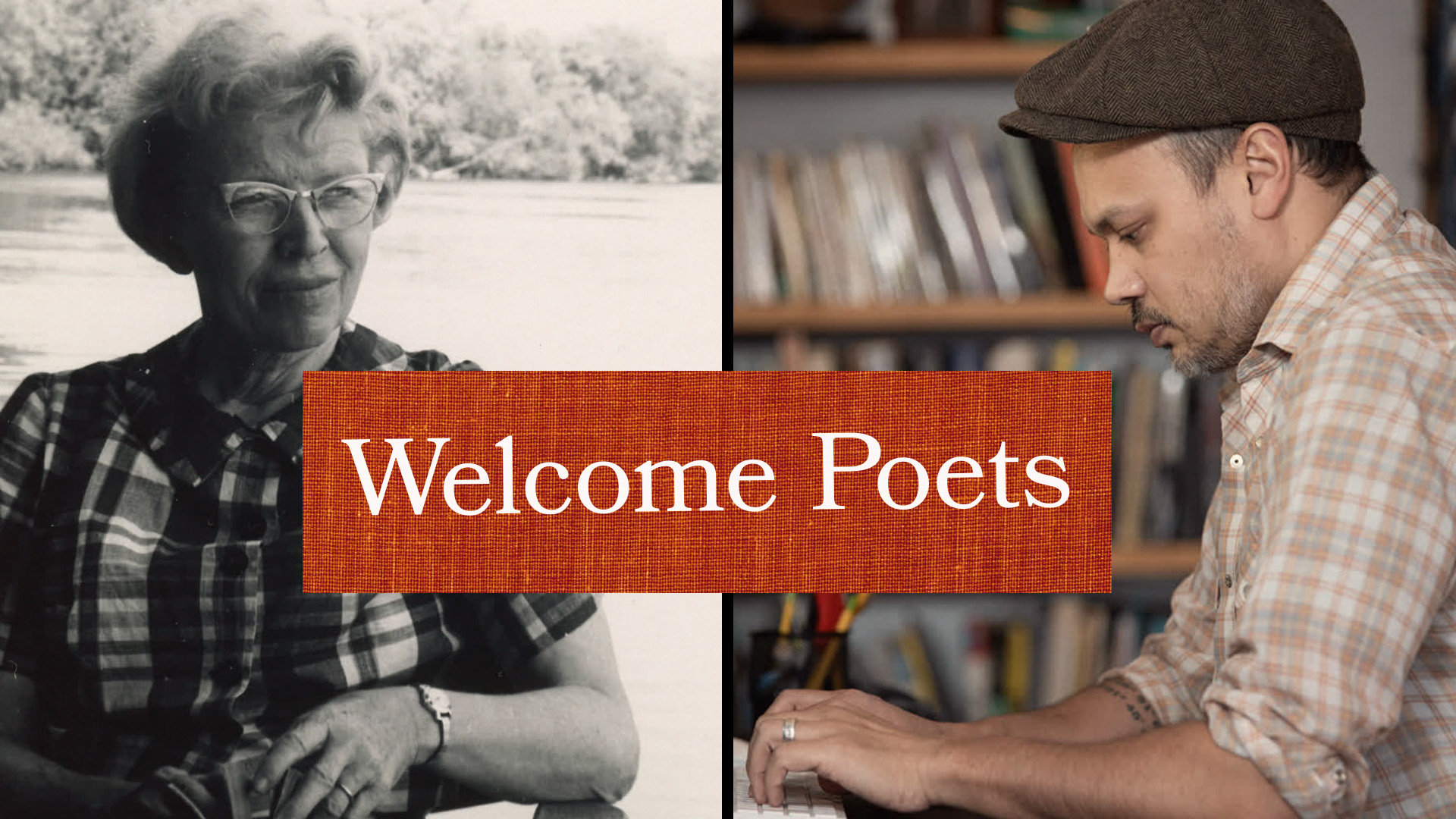
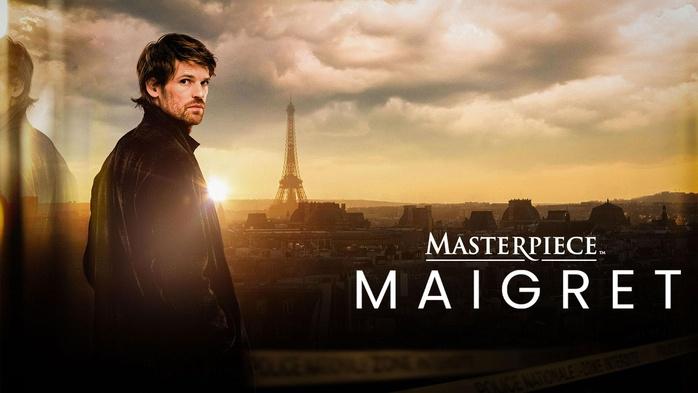



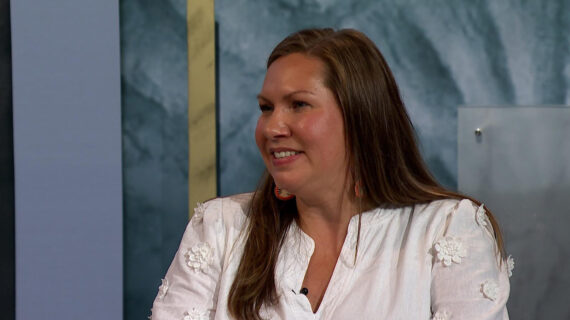
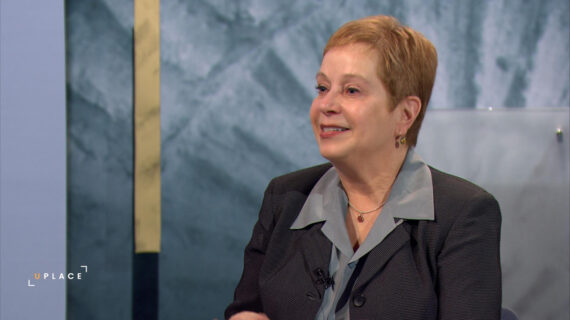
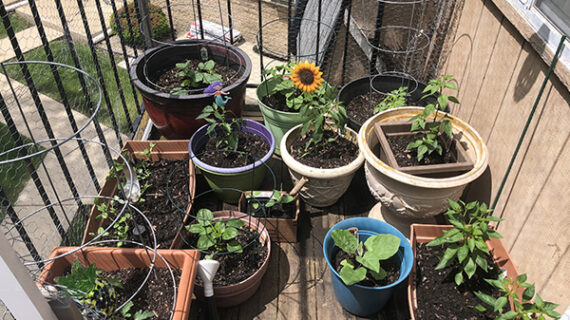
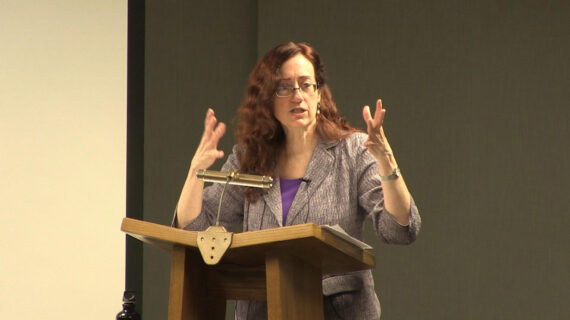
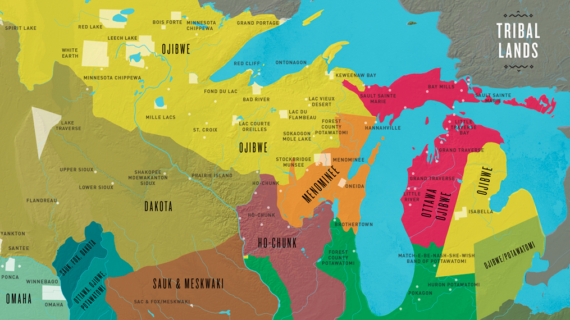


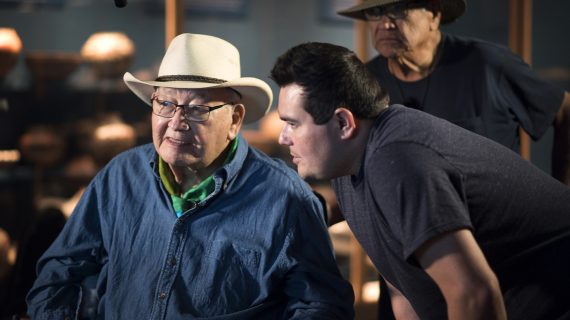

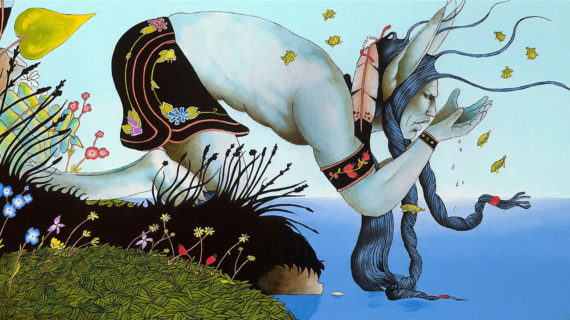

Follow Us